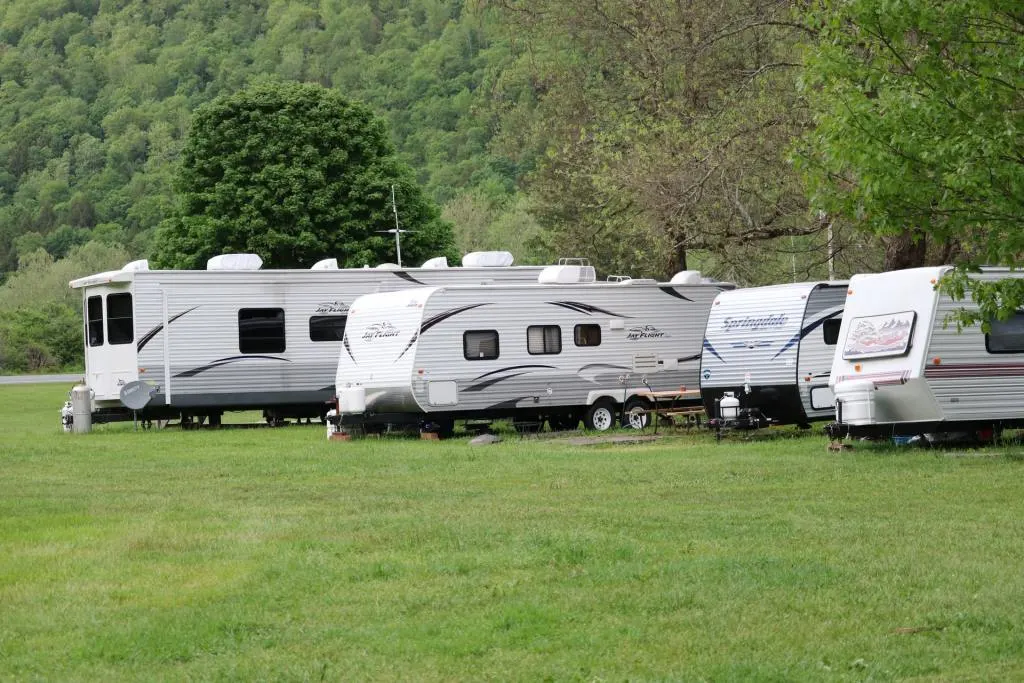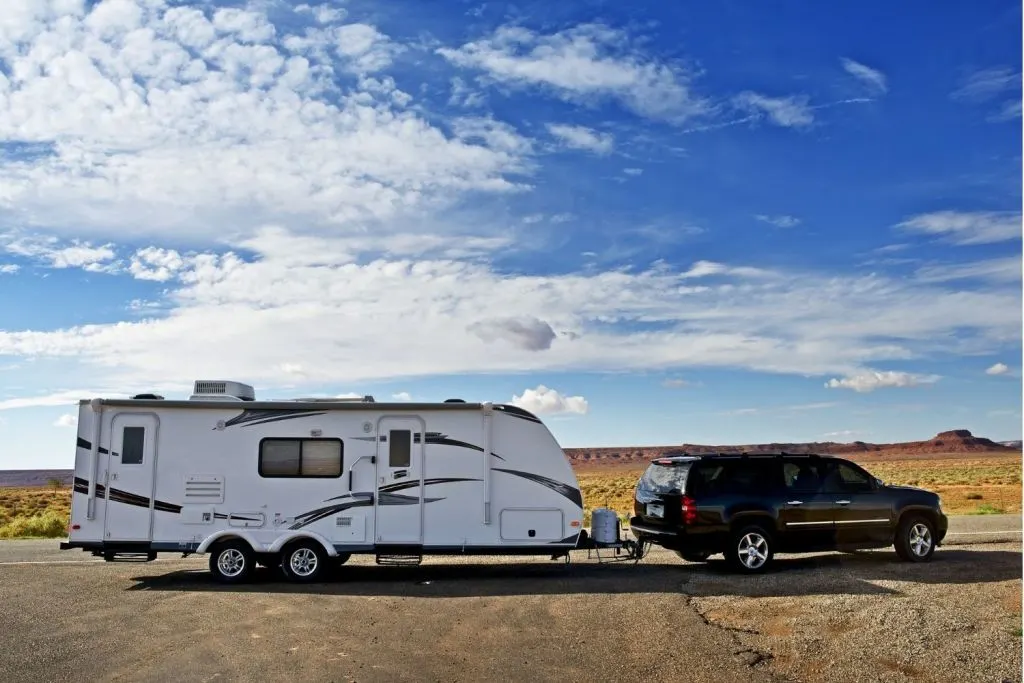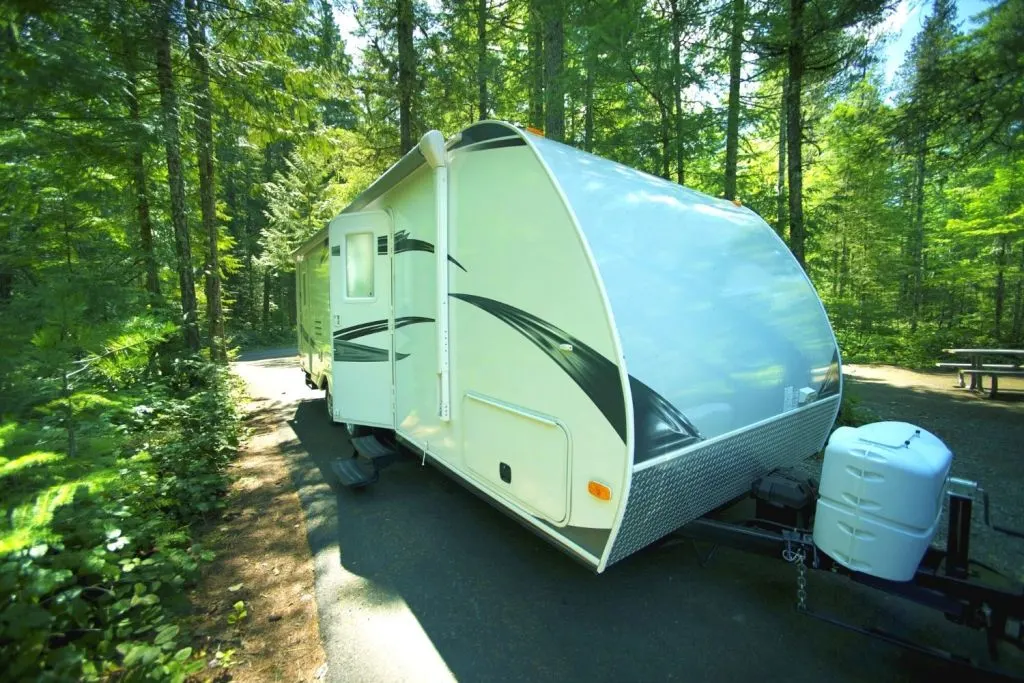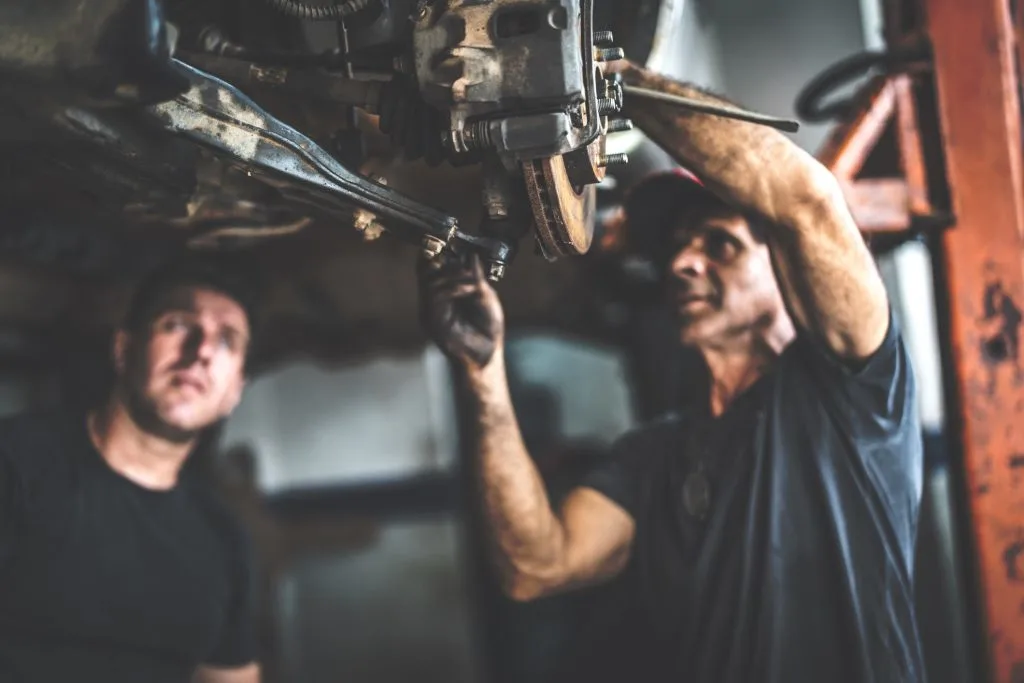What Type of RV Siding Should You Avoid?
An RV is a big purchase. Exciting! But big. So, as with any large purchase, you need to do your due diligence before buying. Today we’re going to talk all about RV siding.
RV siding plays a large role in leak prevention and insulation ratings. It can also affect the overall aesthetic of an RV.
In this article we cover the pros, the cons, and which kind of RV siding is the best.

Types of RV Siding:
There are three types of RV siding. Corrugated aluminum, smooth aluminum, and fiberglass. So how can you spot the differences?
Corrugated aluminum: This type of siding is easy to spot based on its textured ridges. Corrugated aluminum siding consists of multiple separate panels that interlock to cover the entire rig. Many vintage campers use corrugated aluminum.
Smooth aluminum: Smooth aluminum is another RV siding option. The outer shell is not broken up into small pieces like corrugated siding, but rather is smooth and continuous. Some people prefer the seamless look offered by smooth aluminum.
Molded Fiberglass: This is similar to boat construction. These campers typically have two pieces of molded fiberglass that join in the center.
Traditional Fiberglass: Finally, an RV could have fiberglass siding. Fiberglass is heavier than aluminum, but it is durable and gives your RV a streamlined look. Many traditional fiberglass RVs also have a gel coat for added protection and better resale value.
Aluminum RV Siding
Aluminum siding is a common material for RVs. It has been around for a long time and is one of the most tried-and-true RV sidewall materials out there.
Here’s what you can expect if you purchase an RV with aluminum siding.

Advantages of Aluminum
Aluminum RV siding offers several advantages; one of the main ones being cost. Aluminum RVs come with a much lower price tag than fiberglass RVs. They can also be less expensive to repair. This is especially true of corrugated RV siding. Because corrugated siding has multiple small panels, you can replace just one panel rather than the entire sidewall if you have damage.
Another advantage is that aluminum is very lightweight. This is great for people with a less powerful tow vehicle looking for a travel trailer. Being lightweight also means you’ll get better gas mileage and save money at the pump.
Manufacturers pair aluminum siding with a wood frame. This construction helps keep the cold out so you stay warmer when RVing in cooler temperatures.
Last, aluminum RV siding will not delaminate like fiberglass can. Replacing or repairing delaminated siding is a tremendous headache. Not only is it time intensive, but it is also very expensive. That you can avoid this headache with aluminum siding is a huge plus for this material.

Disadvantages of Aluminum
Many drawbacks of aluminum siding are related to appearances. Some people simply don’t like how aluminum siding looks. If you are one of those people, no problem! There are other options. If you don’t mind the look, not so fast.
Aluminum siding is more prone to dents and is harder to keep looking new. This difficulty, combined with some people’s dislike of corrugated siding, could impact your RV’s resale value.
Another problem you may experience with aluminum siding is water leaks. If you have leaks in your siding, water can get into the wood interior and cause it to rot.

Fiberglass RV Siding
Some people swear by aluminum siding given its many advantages and low-price tag. Others are in the fiberglass camp. Here are some reasons to love fiberglass and some drawbacks to be aware of before making your purchase.
Advantages of Fiberglass
First, fiberglass RV siding is more durable than aluminum siding. This is important for a few reasons. One reason is resale value.
A clean look means more money in your pocket from a sale.
Another is that we subject RVs to a lot. We drive these vehicles thousands of miles; we live out of them; we store them under trees; we leave them out in the sun. You get the idea. Durable is definitely a huge pro for an RV.
Fiberglass siding, while sometimes heavier, is more aerodynamic than aluminum siding. This aerodynamic shape can help cut down on drag and improve your gas mileage. Fiberglass siding also stands up well to UV radiation, which is a must considering our rigs are almost always in the sun.
If you stay at RV parks, there is often lots of noise outside your rig. Fiberglass siding is the clear winner in these instances. That’s because fiberglass walls provide more noise deadening than aluminum siding.
People also really like the look of fiberglass siding. RVs with this type of siding always look clean and polished, even with minimal maintenance. This keeps them looking new for longer, which also helps with resale value. Plus, it is nice to have a rig with good curb appeal to come “home” to.

Disadvantages of Fiberglass
One real downside to fiberglass siding is the cost. This type of siding is much more expensive. If you’re looking for something more budget-friendly, fiberglass might not be an option.
Another concern is that pesky delamination we mentioned earlier. Delamination can happen because of water leaks, and it is expensive to fix.
Another expensive fix? Cracked fiberglass.
If this happens, you may need to replace the entire sidewall. Most of the time, you won’t be able to fix these issues yourself like you can with many aluminum siding problems. No DIY means higher bills from a professional.

What Type of RV Siding Should You Avoid?
The type of RV siding you choose or don’t choose really depends on your preference. As you can see, there are pros and cons to both options. Nothing in the RV world is perfect, no matter how much we wish it would be.
So, depending on your style and your budget, we know you can be happy with either aluminum or fiberglass siding.
The more you read online, the more you’ll find that there are diehards in both camps. So, take your pick and roll with it. You can always make a change if you decide to sell your rig down the road.
Siding Is Just One Consideration
When you’re new to RVing, there is a lot to take in. RV siding material is just one more of those things. Both aluminum and fiberglass RV siding have their benefits and their drawbacks. Since there are only two choices out there, don’t get bogged down by this factor alone.
When deciding what RV to purchase, siding material is just one consideration.
Don’t forget about the floor plan, interior and exterior features, length, and weight, for example. Buying an RV is such an exciting purchase! We know once you pull the trigger and have your very own rig, it will start to feel like a home away from home no matter what the outside looks like.
Pro Tip: Here’s what an RV mechanic says will break first in an RV.

We’ll Help You Find the Best Free Camping in the USA
You should give it a try!
As a matter of fact, these free campsites are yours to enjoy. Every time you pay federal taxes, you’re contributing to these lands.
Become a FREE CAMPING INSIDER and join the 100,000 campers who love to score the best site!
We’ll send you the 50 Best Free Campsites in the USA (one per state). Access the list by submitting your email below:
Actually, there is another type of plastic that was used for awhile in the small trailers. Fiberglass is in the family of thermosetting plastics. Thermoplastic plastics are much more durable. That’s why most kayaks, canoes and other small boats are made from them instead of fiberglass. They don’t translate to the bigger boats as they can’t be made stiff enough. The Royalex brand was successful for awhile but I think went out of business a few years ago. A small trailer, scamp size, was pushed over the side of a steep hill in a demo. You watched in bounce down the hill. Only the glass broke. The reason thermoplastic is only used on small stuff is weight. A 10′ thermoplastic kayak can weigh twice as much as a 16′ thermosetting Kevlar canoe. Royalex overcame this to a point because it was a sandwich of two thinner layers with foam in between. I think the main reason it died was size. Americans just seem to want everything BIG. From home to RVs.
Here I sit in my small class b surrounded by huge class AS and 5th wheelers lol!
I was very confused between choosing aluminum siding vs fiberglass. Thank you for clarify that.
Planning a trip from southern Maine to Alaska. Fuel alone will be quite expensive so saving money on where to stay with a travel trailer along the way would be very helpful.
[…] were some of the common teardrop camper siding options. These teardrop camper siding options have been tested and tried for years. Among the […]